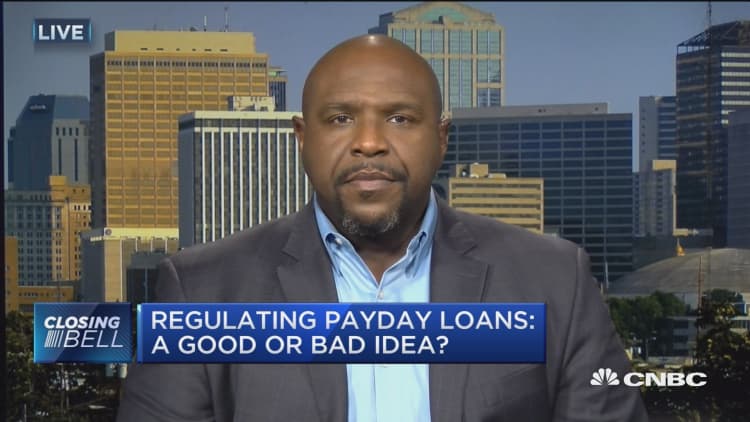Senator Kirsten Gillibrand, D-N.Y., is proposing legislation aimed at putting an end to current payday lending practices by giving some banking services a new home: the U.S. Post Office.
The legislation, called the Postal Banking Act, would make retail banking services available at all U.S. Postal Service locations. That amounts to 30,000 post offices nationwide.
Services would include small-dollar loans for consumers that offer low fees and low interest rates.
Those transactions would compete with payday loans, a short-term advance that typically comes due with your next paycheck.
The terms for payday loans are often unfavorable, said Alex Horowitz, senior research officer for the consumer finance project at Pew Charitable Trusts, an independent research organization.
About 12 million individuals use payday loans annually, according to Horowitz. The average loan is $375 for a period of five months, which accrues about $520 in fees, he said.
"These loans are extraordinarily expensive with annual percentage rates near 400 percent," Horowitz said.
Payday loans are often provided by small credit merchants to individuals who face high prices and unaffordable payments, Horowitz said. That includes households that hold traditional bank accounts but cannot access such transactions through those institutions. It also includes a smaller portion of households that do not have bank accounts at all.
Last October, the Consumer Financial Protection Bureau authorized banks and credit unions to provide small dollar loans, as long as consumers have more than 45 days to repay the money. Those institutions have the capability to offer loan rates that are six times lower than available payday loans, according to Horowitz.
But those institutions still need the go ahead from their respective regulators in order to provide these loans. While the regulator each institution answers to varies, they include the Office of the Comptroller of the Currency, the Federal Reserve, the Federal Deposit Insurance Corporation and the National Credit Union Administration.
A spokesman for the CFPB declined to comment, citing the agency's policy to not comment on pending legislation.

The idea first surfaced in a report from the Office of the Inspector General in January 2014. The Postal Service could see $8.9 billion in new revenue annually from receiving 10 percent of the interest and fees being spent on non-bank transactions.
Banks and credit unions would be well positioned to offer these services because of their ability to provide speed, ease and certainty, Horowitz said. Postal banking, on the other hand, would address the needs of the underbanked and unbanked populations.
Some rural areas have post offices, but no bank or credit union branches, Pew found in its research.
In addition to small-dollar loans, Gillibrand's postal bank legislation also includes other services including small dollar checking and savings accounts; transactional services including debit cards, cash machines, bill payments and online services; as well as domestic and international wire transfers.
More from Personal Finance:
This is why millennial men want a spouse who earns more than they do
These are the states where retirees have the most income
Here's how much cash the typical American wants for his social media data
It's important to note that transaction services and credit services are different and will require different expertise and economics to work, Horowitz said.
There are some difficult questions that need to be worked out in order to create a successful postal bank, said David O'Connell, senior analyst at Aite Group, an independent research and advisory firm.
If the postal bank offers lower rates on payday loans, chances are they will have to be subsidized to account for the risk, O'Connell said. That could fall on non-payday loan borrowing taxpayers. The government would also have to assume the responsibility of collecting on any defaulted loans made to cash-strapped individuals, he said.
Dennis Shaul, CEO of the Community Financial Services Association of America, a national association representing non-bank lenders, said that while he welcomes greater competition, which can drive down costs for consumers, there are some concerns.
"To date almost all of the attempts to create small-dollar loan alternatives have been charity-based, required government subsidies, or were unprofitable and unsustainable," Shaul said. "The private sector remains the best opportunity for serving small dollar, short-term loans."


